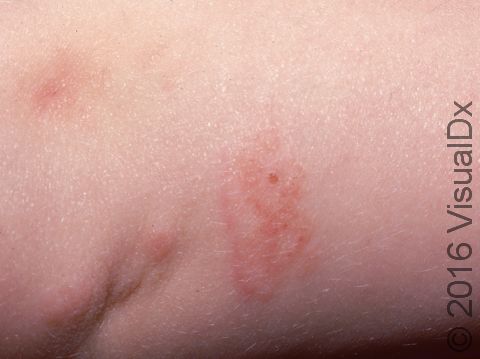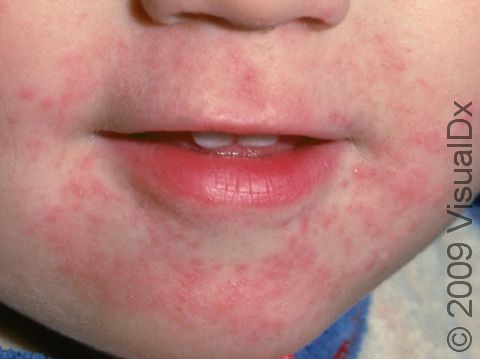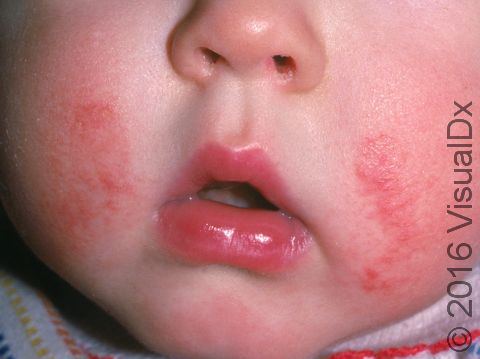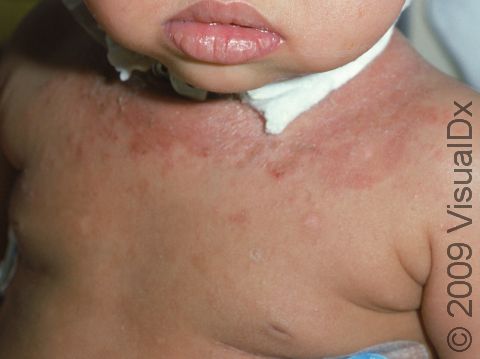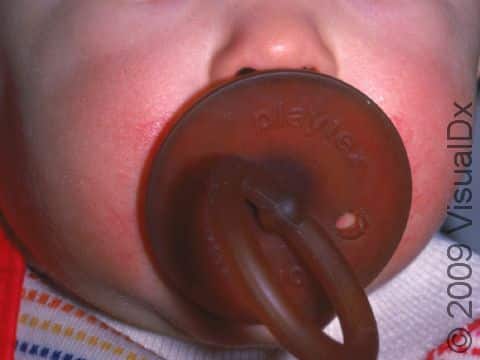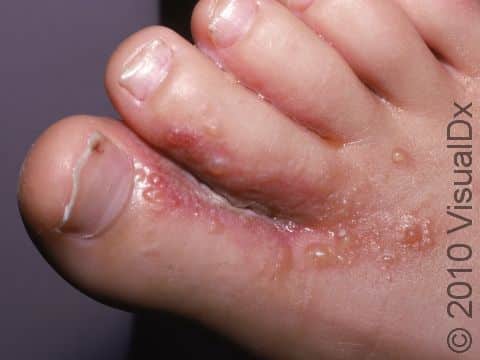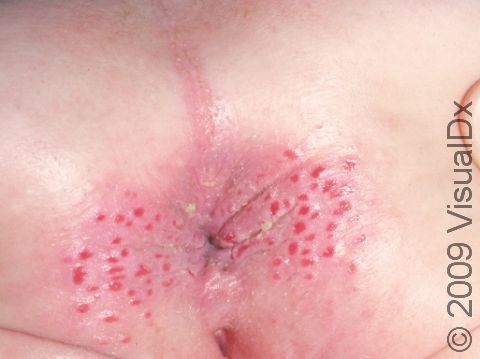Irritant Contact Dermatitis
Dermatitis, in general, refers to an inflammation of the skin. Irritant contact dermatitis, specifically, is inflammation of the skin caused by contact with a particular substance. This can be any chemical substance, such as soaps, detergents, and fabric softeners. The reaction can look like a burn.
Infants experiencing irritant contact dermatitis will usually be fussy. There may be obvious skin irritation, including inflammation, swelling of the area, and warmth. The rash will be confined to the specific area that came in contact with the offending agent. The onset of the skin reaction in irritant contact dermatitis is immediate, as opposed to allergic contact dermatitis, where there is a delayed reaction in which the offending substance causes production of antibodies that result in a rash, usually within 24-72 hours.
Who's At Risk?
Anyone can experience irritant contact dermatitis, but the thin skin of babies and young children makes them especially susceptible. The most common irritant contact dermatitis in infants is diaper rash (irritant diaper dermatitis, discussed separately). In this case, there is a skin reaction in the diaper area caused by prolonged contact with the natural chemicals found in urine and stool.
Irritant contact dermatitis also commonly occurs around the mouth in babies due to skin contact with baby food or drool.
Signs & Symptoms
The most common location for irritant contact dermatitis is the hands, although any body surface can be affected, including the genitals.
The affected areas appear as pink-to-red macules (small, flat, smooth areas) or patches (larger flat, smooth areas). In darker skin colors, the redness may be harder to see or may appear purple or gray.
Self-Care Guidelines
- Remove whatever chemical or condition is causing the irritation, if known, and protect the skin from further exposure.
- For irritated skin in body folds, try using a barrier cream with zinc oxide paste, such as Desitin.
- Apply petroleum jelly (eg, Vaseline) or a thick moisturizing cream (eg, CeraVe moisturizing cream) to wet skin after bathing or washing. Reapply at least twice daily to help further protect the affected areas of skin.
- For itchy areas, try applying over-the-counter hydrocortisone cream (0.5%-1%) twice daily for a few days.
Treatments
The medical professional may prescribe topical steroids if inflammation is present.
Visit Urgency
See your baby’s medical professional if the rash does not go away with self-care measures.
References
Bolognia J, Schaffer JV, Cerroni L. Dermatology. 4th ed. Philadelphia, PA: Elsevier; 2018.
James WD, Elston D, Treat JR, Rosenbach MA. Andrew’s Diseases of the Skin. 13th ed. Philadelphia, PA: Elsevier; 2019.
Kang S, Amagai M, Bruckner AL, et al. Fitzpatrick’s Dermatology. 9th ed. New York, NY: McGraw-Hill Education; 2019.
Paller A, Mancini A. Paller and Mancini: Hurwitz Clinical Pediatric Dermatology. 6th ed. St. Louis, MO: Elsevier; 2022.
Last modified on June 17th, 2024 at 11:46 am

Not sure what to look for?
Try our new Rash and Skin Condition Finder
